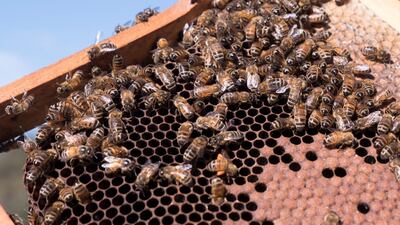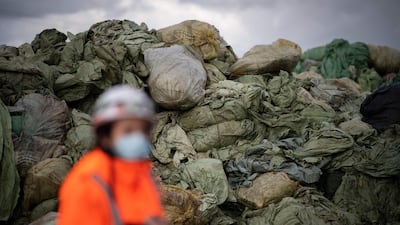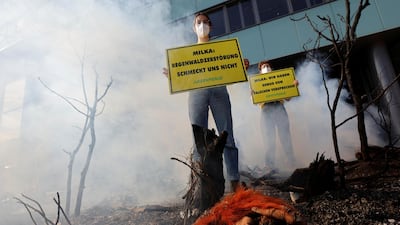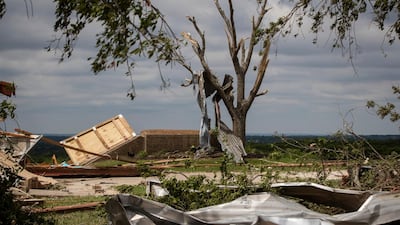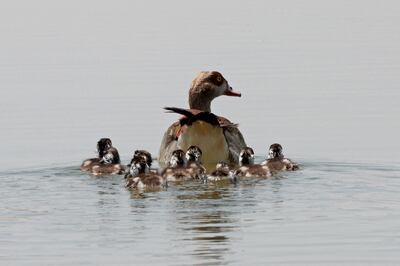Biodiversity loss is a global phenomenon. Driven by habitat degradation, climate change, the introduction of invasive species and other anthropogenically induced factors, around 1 million of the 8 million plant and animal species on earth are threatened with extinction. Increasingly, biodiversity loss is being recognised as a systemic risk with far-reaching consequences, including financial risks for businesses worldwide.
The World Economic Forum estimates that more than half the world's GDP is moderately or highly dependent on nature and its services, and therefore exposed to risks such as deforestation. In 2020, the consequences of biodiversity loss became all too familiar, with the Covid-19 pandemic illustrating how an invisible shift in nature can manifest as a global socioeconomic crisis.
Businesses, particularly in the soft-commodity supply chain, could have a key role in stopping the destruction of nature and preventing future disasters, including pandemics. Though some corporations are addressing the financial risks of biodiversity loss, many more remain unaware, partly because of an historic focus on climate change. It is also because of the sheer complexity of biodiversity as an issue, as well as the current absence of direct and material financial metrics that allow companies to assess and make ecosystems a focal point of their social responsibility strategies.
Recognising this increasingly material environmental and financial risk, the seminal Dasgupta Review – a report commissioned by the UK Treasury and published in February – argues that our current measures of wealth, such as GDP, do not incorporate the value of nature or our use of it. Doing so would be vital for achieving sustainable growth. What's more, the report points out that as nature is silent, invisible and mobile, companies are not always aware of the ecosystem services they exploit.
Terrestrial biodiversity loss is primarily tied to companies operating in three consumer staples: palm oil, beef and soy. These soft commodities are responsible for around 70 to 80 per cent of the 10 million hectares of natural habitat that the UN Food and Agriculture Organisation estimates is lost every year to deforestation, a key nature-related risk.
Companies with exposure to deforestation risks are becoming more aware of the reputational and financial risks of their inaction – and, increasingly, the existential threat of degrading the very resources upon which their industries rely. Considering the findings from the Dasgupta Review, there are four main ways such companies can help arrest deforestation.
First, developing robust monitoring would allow companies consuming soft commodities to understand where deforestation risk is greatest in their supply chains, and enable purchasers further up the chain to perform biodiversity due diligence. Deploying technologies such as satellite monitoring is a vital way to address the root causes of biodiversity loss.
Second, by supporting smallholder farmers by paying not only for the crop, but for the ecosystem services provided by intact vegetation, companies can empower communities to protect nature.
Third, companies can move to adopt universal standards. Agreement among all stakeholders in soft-commodity supply chains creates momentum to make sustainability a reality. Indeed, we have seen this already, where, thanks to the mass adoption of NDPE (no deforestation, no peat, no exploitation) sourcing policies, an estimated 28 per cent of the land conceded for palm oil plantations in Indonesia is no longer viable for palm oil development.
Finally, better use of already-deforested land can meet supply requirements and circumvent the need for land-use expansion. What’s more, more efficient agricultural practices can permit greater yields from already-cleared lands. Such efforts are already being promoted in the Cerrado, a region of Brazil, for soy cultivation, where 18 million hectares of degraded pasture could be made available.
Looking at the issue more fundamentally, there are many calls for businesses and governments to rethink their approaches to accounting for nature and embed biodiversity protection at the heart of the markets. For companies, this could include assessing their resource efficiency based on an approach that focuses on inputs.
Whereas an “output approach” measures the emissions, pollution and waste caused by the creation of a product, an input approach measures the total amount of natural resources that go into the product. This method of analysis permits the inclusion of natural capital in profit and loss accounts, offering a more comprehensive assessment of the total economic cost of production and giving a more accurate representation of profit – factoring in positive and negative externalities.
From a macroeconomic standpoint, putting a price on nature through ecosystem accounting can make us more aware of our use of, and impact on, nature in the production process. Policymakers and institutions have started to incorporate nature preservation into policy measures.
On a local scale, the UAE Ministry of Climate Change and Environment’s National Biodiversity Strategy states that, by the end of 2021, 50 per cent of government and private land exploited for agriculture, aquaculture and forestry will be sustainably managed to ensure the conservation of biodiversity.
It has also declared that pollution from different sources will be reduced to levels that do not harm the functioning of sensitive ecosystems and biodiversity. Globally, more countries have taken to a “user pays” approach to ecosystem services and protected areas, with trade deals setting incentives to deal with the cross-border issues.
However, any meaningful reversal of biodiversity loss will need companies around the world to completely reassess their interactions with nature. If the past year and a half has taught us anything, it is that reconfiguring our connection to the natural world is an urgent next step we cannot ignore.
Michael Wilkins is a senior research fellow in sustainable finance at S&P, a global ratings agency


